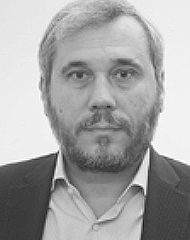Hera has always reached – often outperforming them – its Business Plan targets. An accurate and structured planning process is the foundation of long-term credibility and sustainability in Hera strategy.
Let’s listen to the Head of Strategy, Regulation and Local Government, Mr. Massimo Vai.
Mr. Vai, do you confirm that part of the success for Hera comes directly from its approach to Strategic Planning?
Absolutely. The way we design the Business Plan and update it on a yearly basis is key, as we aim to translate strategic goals into quantitative elements and shared projects that allow us to meet those expectations.
What is your planning model?
Over time, Hera has consolidated the practice to conduct a full review of its five-year Plan yearly. Such process permeates the Company at all levels and across each division, culminating with a specific meeting with the Board (so called “Strategy Day”) to share the medium-long term strategic vision, ranging from contextual elements of our ecosystem to the identification of relevant paths and patterns suited to better respond to threats and opportunities of the coming five years.

What is the role of the planning team that you head?
The Strategic Planning and Policy Making team is regularly evaluating the main scenario variables in economic, regulatory, competitive and industrial terms. We forecast the scenario evolution, highlighting risks and opportunities and providing an estimate of the size of expected impacts. At the same time, we provide in-depth papers to the Group Senior Management, based on benchmark analysis, or policy and regulatory studies that focus on current and expected trends in the Group business areas, with the aim of identifying long-term patterns that need to be promptly addressed. Furthermore, we act as a sort of glue that binds the different Group Organizational Units together, with the objective of facilitating dialogue, sorting out potential conflicts and contributing – as regards contents and methodologies – to a continuous improvement path for quality and comprehensiveness of activities.
How do you interact with Hera senior management?
Upon completion of preliminary steps concerning the scenario, we meet with the Executive President and the CEO to review the Group strategic cornerstones and to reaffirm priorities. Along this process, we might also identify specific studies that could better support the identification of targets. The evaluation of possible gaps between market Key Success Factors and corporate Distinctive Competencies moreover allows Hera top management to identify the “investible” areas over the Plan’s period. During the development of the Business Plan, my team constantly reports to the senior management on the progress of the work and the size of the upcoming gaps with assigned targets. We then promptly address needs to trim or to strengthen targets, within the proposal that we will submit to Organisational Units.
Do you interact with the rest of the management team?
Of course we do. While we develop the Plan, we constantly meet single Organisational Units, so we can map all significant deviations between the last available historical data and the estimates we had set for the same variables during the previous planning span. During this development phase, we have intense line-up with the Organisational Units and a valuable support from the Group Controlling Department. We analyse and share any issue, in order to identify the opportunities to address together in the Plan’s period.
Can you give us more detail about the interaction style you use with the Units?
We definitely try to stick to a business-partnership approach – well appreciated by Unit Heads. We aim to an overall sharing of business issues. We go into detail and try to understand the point of view of the single executive working on developing the Plan. Doing so, we avoid most unwanted situation that may arise if my team and Organisational Unit disconnect.
What happens after identification of preliminary gaps?
At that point, we have a well-identified baseline to implement top-down gap-filling targets, sized according to available business leverages: such targets make it possible to design an overall growth path that is consistent with strategic objectives; then, we can break the path into a series of detailed elements. On the basis of such elements, we define engagement of key executives with respect to the activities aimed to reach the assigned targets. During the next couple of months, the submitted targets become Plan proposals. Their key features, and the differences with respect to the previous Plan, are then presented to the Top Management.
At Hera, how do yo incentivise management to achieve Plan’s target?
Most significant and impacting targets go into Balanced Scorecards. Some goals that involve different Organisational Units are the basis for the variable part of salaries for middle and senior management. Management package is thus linked to the achievement of economic, financial, service quality and sustainability targets.
How do you finalise the planning process?
In the final phase of the planning process, we draft a detailed document containing all relevant information forming the Business Plan. It represents a precious repository, provided its information density in terms of projects and strategies. The plan document is ultimately submitted to BoD for approval. Lastly, every year Hera presents to the financial community all material information in the Plan.
Thank you for your time.















